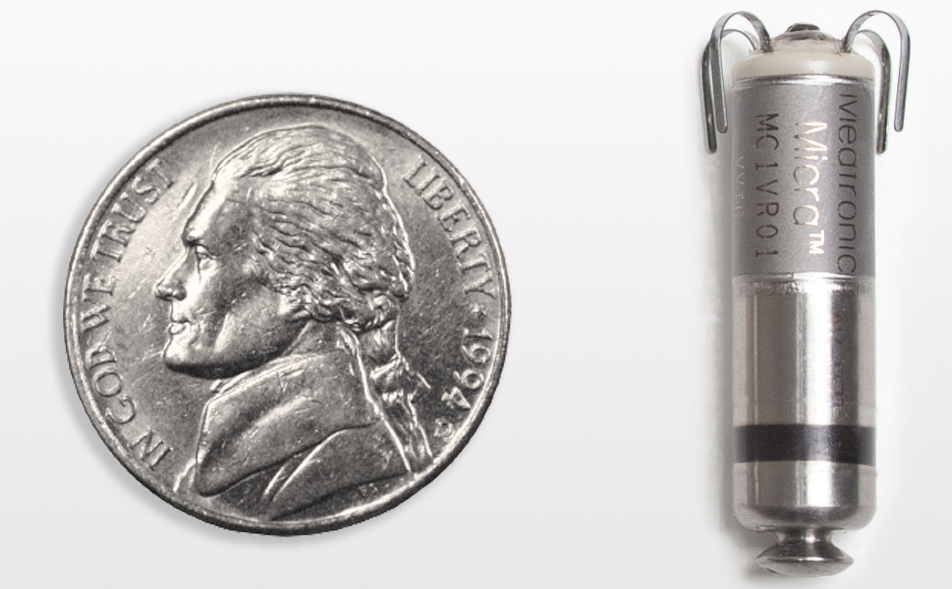Leadless Pacemaker

What is a leadless pacemaker?
A permanent pacemaker is an implantable medical device that quietly sends electrical impulses to initiate a heart beat. It is usually used to treat people who develop symptoms from a slow heart rate.
Conventional pacemakers are implanted with wires that go from the subclavian vein into the heart. These pacemaker wires (also called leads) are then connected to a pacemaker unit that sits on top of the chest muscle but tucked beneath the skin.
In 2016 the Food and Drug Administration (FDA) approved the first leadless pacemaker for commercial use in the U.S. A leadless pacemaker is a self contained device that is inserted from a femoral vein in the leg and brought to the heart. It does not require pacing wires and is implanted directly into the right lower chamber (right ventricle) of the heart.
Who is a candidate for a leadless pacemaker?
Patients who require pacing mostly from the bottom chamber of the heart are good candidates for leadless pacemakers. Most of these patients have permanent atrial fibrillation and have good heart pump function.
What are the benefits of a leadless pacemaker?
It is 90% smaller than a conventional pacemaker.
Patients do not have an incision, scar, of bump in the chest like those with conventional pacemakers.
Because leadless pacemakers do not require implantation of wires in the heart there are less complications and less re-operations.
No arm restrictions which are usually required for a limited time after implant of a conventional pacemaker with wires.
Can l have an MRI scan with a leadless pacemaker?
Yes
What is the battery life of a leadless pacemaker?
The longevity of a leadless pacemaker is comparable to that of a conventional pacemaker, and can last up to 10-12 years (depending on how much it is used).

